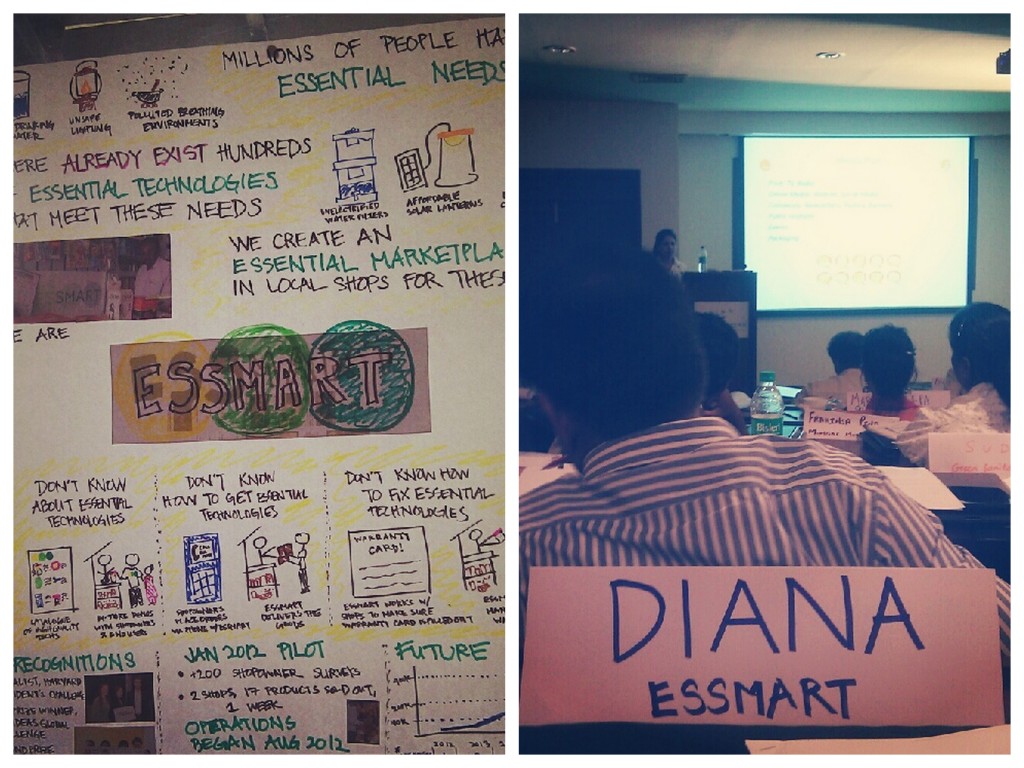
A few months back, Selvan met a Dasra representative at a conference held at the Tata Institute of Social Sciences in Mumbai. She told him about the Dasra Social Impact Program, an executive education program that trains decision makers of leading nonprofits and social enterprises across India. Then she said that Essmart should consider participating in it.
As Essmart’s co-founders, Jackie and I deliberated about whether or not to join. There were pros and cons. The main pro was that Dasra is well connected in the social sector (industry?), and we’re new to India and could use the connections. This is particularly the case because, as Jackie wrote in the previous blog entry, our operations are based here and neither of us is Indian. The second pro was what I would be able to learn from other participants. The third pro was personal/professional development, since I now have the role of pitching Essmart in India.
Despite these pros, the cons were also plenty. The biggest con was that participating in the program came at a financial cost, and we’re bootstrapping. The second con was that the program required three weeks of my time.
After a analyzing the potential costs and benefits, we decided to go for it. Were the costs worth it? It’s too early to tell if Dasra’s connections will pan out into something financially tangible for Essmart. I’ll have to wait until after the second and third workshops, when we comb through and edit our business plans, polish our pitches, and present to potential investors. I did learn a few new concepts from the sessions and peer-learning sessions, but sometimes the discussions were a bit unfocused, nonprofit-centric, and not yet applicable to us at our early stage. I think I did grow personally and professionally. At least, I’m figuring out the most effective ways for me to represent Essmart and the most effective ways for Essmart to be represented to potential customers, partners, and funders. We’re still firm believers in limiting hype and selling results.
It has taken me a few weeks to see it, but the most beneficial takeaway from DSI’s first workshop was the time and space to revisit, rethink about, and re-articulate Essmart’s vision. When we’re busy with operations, we tend to lose sight of the big picture. Since Essmart is just starting off, we need to make sure that our first steps are taken carefully and deliberately. But for us to be aware of how our decisions support our vision, we need to be able to clearly articulate our vision.
The importance of defining who we are, what we do, and what we stand for came up the following week, when I made it down to Pollachi. Sales are picking up considerably, especially for a particular product. We also realized that if we go through additional, non-retail-store distribution channel, we could increase our sales in the short-run.
However, Essmart’s vision is to use the retail shop network as a means for people in rural areas to learn about great new products, get great new products, and trust the people behind great new products. It would be easy to follow the money and chase volumes of easy sales, but that wouldn’t build up the vision. We don’t want to become seen as distributors of a single product who go through ad hoc measures to sell. Anyone can sell products, but we’re creating a new distribution channel. Creating a new distribution channel takes time and conscious decision-making, especially in the early stages.
So, thank you, DSI, for making us hammer out our business model canvases, think through our theories of change, write and deliver 30-second pitches, and turn-in a two-pager and business plan slide deck. All of these activities help us recenter on who we are, what we do, and how we do it. We’re looking forward to working with you over the few months ahead.

Follow Us!